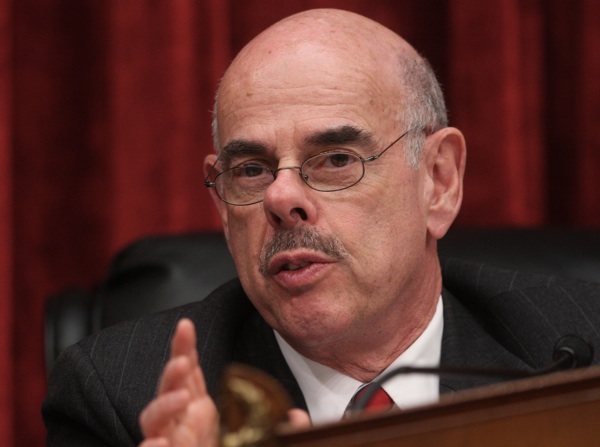Pharma Deal Haunts Democrats
Senate Democratic leaders won quick praise from seniors this week when they vowed to close the nettlesome coverage gap in Medicare’s prescription drug benefit, but left unmentioned was the looming battle.
Jul 31, 2020130.1K Shares2.4M Views
Rep. Henry Waxman (D-Calif.) (WDCpix)
Senate Democratic leaders won quick praisefrom seniors this week when they vowed to close the nettlesome coverage gap in Medicare’s prescription drug benefit.
“I am committed to fully closing it, once and for all,” Senate Majority Leader Harry Reid (D-Nev.) saidMonday. “We will do so in our conference committee with the House, whose bill already closes the gap.”
[Congress] Left unmentioned, however, was how they plan to pay for that promise without unraveling a friendly dealstruck earlier in the year between the pharmaceutical lobby and Democratic leaders in the White House and Senate. Though the House bill does indeed close the coverage gap, known disapprovingly as the “doughnut hole,” lower-chamber leaders chose to offset that provision by allowing states to negotiate drug prices for millions of low-income seniors, which is prohibited under current law. Such negotiations would save the government tens of billions of dollars, but would also undermine the deal with Big Pharma.
The decision to kick the issue to the conference negotiations, rather than taking it up on the Senate floor, could lead to a clash between Democratic leaders in each chamber over whether the government should be empowered to use its bulk-buying advantage to secure lower prices for both the government and the nation’s lowest-income seniors — something House leaders support, but Democrats in the Senate and White House oppose because of the pharmaceutical deal.
Senate Democrat leaders have already shown zero willingness this year to break the agreement with Big Pharma, under which the nation’s largest drug companies have pledged up to $80 billion to subsidize health-care reform over the next decade in return for assurance that Democrats wouldn’t seek further concessions. Fearing the industry’s opposition to the underlying reform bill, Senate Democrats, behind Finance Committee Chairman Max Baucus (D-Mont.), have already shot down several proposals in recent weeks that would have broken the deal — including legislationmaking it easier for Americans to buy their prescription drugs from abroad, as well as that the House used to close the doughnut hole.
That means that Democrats, if they intend to keep that deal intact, will be forced to find additional money to close the doughnut hole — estimatedat one time by the Congressional Budget Office to cost the federal government more than $56 billion over the next decade. That’s no simple task for Democratic leaders who have already struggled to find offsets for legislation tickling $900 billion. So far, they’re giving no clues how they might do it.
“It’s something that we will have to deal with in conference,” Reid spokesman Jim Manley wrote in an email this week.
Karen Lightfoot, spokeswoman for Rep. Henry Waxman (D-Calif.), a long-time champion of the controversial offset provision, echoed that uncertainty Tuesday. With the Senate bill not yet finalized, she said, it’s too early to begin speculating about conference specifics.
The doughnut hole has been controversial since Medicare’s prescription drug benefit, called Part D, was rammed throughCongress by the Republican majority in 2003. Under that benefit, the government pays 75 percent of seniors’ drug costs up to $2,700, when patients must begin paying full price. After those expenses hit $6,154, the government picks up 95 percent of the tab, meaning the doughnut hole is $3,454.
The gap has created serious health concerns. Indeed, in 2007 roughly 3.4 million Medicare beneficiaries reached the doughnut hole, of which about 15 percent stopped taking their prescriptions as a result, according to the Kaiser Family Foundation.
As part of their $80 billion deal, drug makers agreed to cover half the cost of name-brand drugs for seniors stuck in the doughnut hole, beginning in 2010. The House bill builds on that foundation, cutting the doughnut hole by an additional $500 per person in 2010, and incrementally shrinking the gap further until 2019, when it would close altogether.
The controversy is not over the proposal itself, but how it’s funded. House leaders decided to allow states to negotiate prescription prices on behalf of the nearly 9 millionseniors who qualify for both Medicare and Medicaid — the so-called dual eligibles— as they do for regular Medicaid patients. Such a system allows the states to use the bulk-buying advantage of the large Medicaid pool to negotiate lower costs on prescription drugs.
Prior to enactment of the Medicare prescription drug benefit, dual eligibles also got their drugs through Medicaid. With passage of Part D, however, drug purchasing for duals shifted to Medicare, which was explicitly prohibited from negotiating prices with pharmaceutical companies. As a result, the government currently pays about 30 percent more for dual eligibles’ drugs under Medicare than it would under Medicaid, according to a 2008 study from the House Oversight and Government Reform Committee, then chaired by Waxman.
Indeed, it was Waxman, now chairman of the Energy and Commerce Committee, who inserted the dual-eligible provision into the House bill.
Some upper chamber lawmakers have tried to do the same. During debate over health reform in the Senate Finance Committee, Sen. Bill Nelson (D-Fla.) proposed a similar amendment. The proposal would have no effect on the drug coverage of dual eligibles, but simply shift which federal program would pick up the tab. Nelson said it would save the government $106 billion over the next decade.
The Finance Committee killed it, 13 to 10.
“We have to find some other time, some other way [to close the doughnut hole],” Baucus said after voting against the measure. “The White House did reach an agreement.”

Rhyley Carney
Reviewer
Latest Articles
Popular Articles
